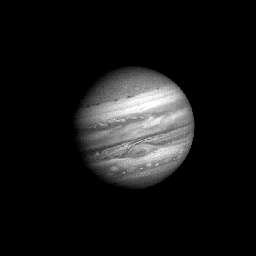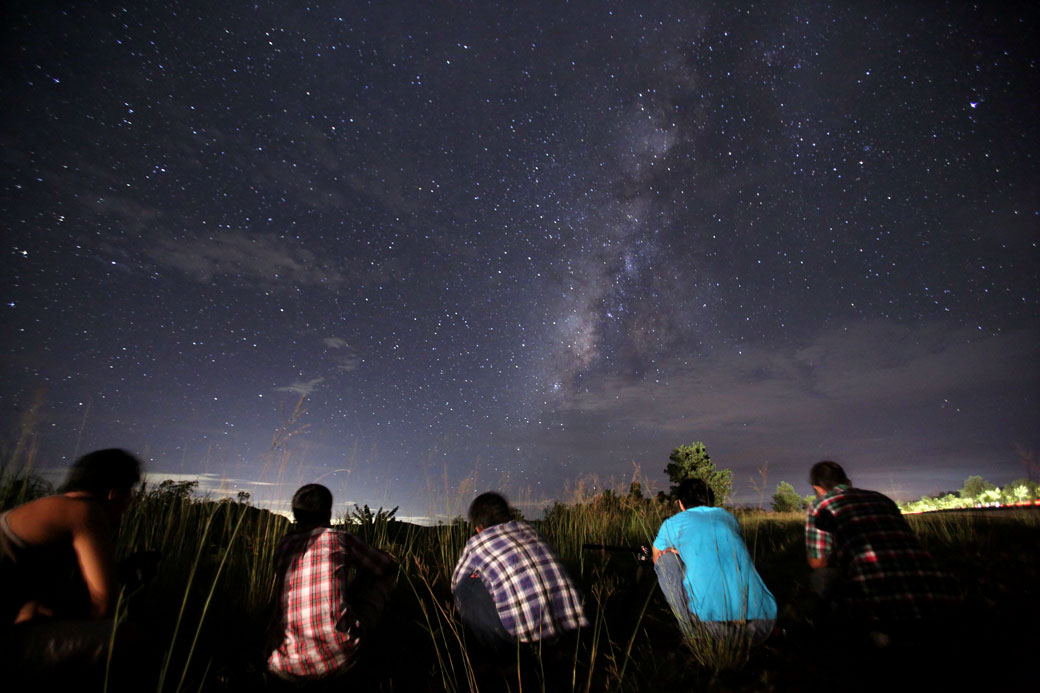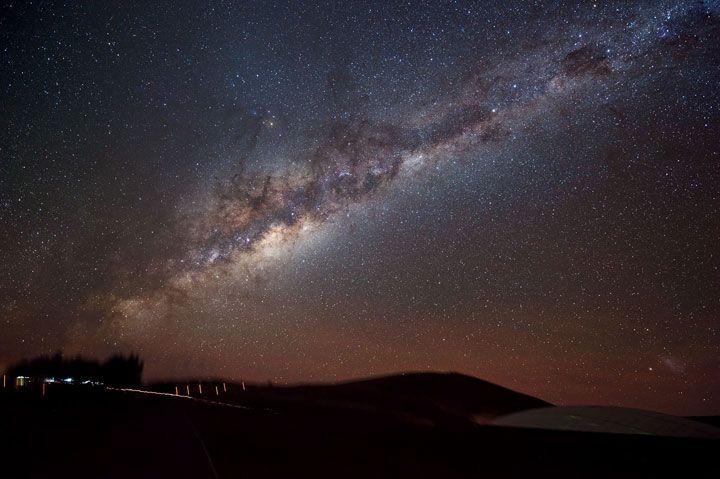How often do you look at the stars?

May 10 is International Astronomy Day and, across the country — and the world — astronomers and astronomy organizations are encouraging you to look up. Places like the H.R. MacMillan Space Centre in Vancouver, as well as the Ontario Science Centre in Toronto, and David Dunlap Observatory north of Toronto will be hosting International Astronomy Day activities.
To mark the day, here are some cool facts about our universe:
1. Most of the universe is made up of stuff we can’t see
When you look up at the night sky, you see billions of stars. In our galaxy alone, the Milky Way, there are an estimated 100 billion stars. And there are about 100 to 200 billion galaxies in our universe, each containing hundreds of billions of stars. Want to try counting them all? You may as well try counting the grains of sand on a beach.
But all those billions of stars and galaxies account for just 4.6 per cent of the universe.
That’s right: almost 96 per cent of the universe is invisible to us.
What we see is comprised of protons, neutrons, and electrons. But it turns out there is evidence of dark matter and dark energy that make up most of our universe.
How can we say something is there when we can’t see it? It’s about how it interacts with other objects.
Dark matter neither emits nor absorbs light or radiation. We know it’s there because of how it interacts with other things in the universe.
A piece of evidence for the presence of dark matter is something called gravitational lensing. In the image below, you can see long streaks of light. That is because the light from a distant galaxy is being bent by the gravitational pull of dark matter. Images like this one help astronomers better understand the presence of dark matter in our universe.
Hubble sees evidence of the presence of dark matter
Source: Hubblesite.org
Dark energy was proposed in the 1990s when astronomers calculated that the universe was neither expanding at the same consistent speed over time nor was it slowing, but instead it was expanding. So something was preventing it from collapsing in on itself.

Get breaking National news
2. Jupiter could have been a star — kind of
If you’ve seen the movie 2010, based on science fiction author Arthur C. Clarke’s book, you might remember that Jupiter undergoes a transformation and becomes a star (if you haven’t, sorry for the spoiler).
Jupiter isn’t a failed star exactly, but with some more mass, it could be a star.
Jupiter formed with rock and ice and then accumulated into something about 10 times as massive as Earth. Once it did that, it began to pull gas from the swirling disk that was forming our solar system. It’s believed that it was at that point that it gained most of its mass (about 318 times more than Earth).

Jupiter, the largest planet in our solar system, contains the same elements as our sun: helium and hydrogen, but it lacks the internal pressure and temperature to jump start the internal system of fusing hydrogen into helium, which is the same process that drives our sun.
How could we get Jupiter to turn into another star? We’d need about 80 times more mass.
3. We are made up of starstuff
Stars don’t live forever. They may die in a spectacular supernova or they may simply swell up and collapse. But when a supernova explodes violently, the leftover gas and dust is thrown out into space, forming nebulae, or clouds of gas. That dust and gas can then begin to form stellar nurseries, giving birth to other stars, and ultimately, planets.
Hubble’s image of a stellar nursery in the Carina Nebula
Source: Hubblesite.org
So all the atoms in your body were once part of a shining star.
4. We see the universe as it was, not as it is
Each time we look up at the stars or distant galaxies, we are looking back in time.
Light travels at roughly 300,000 kilometres per second. We know of nothing faster, nor can we travel that fast. We measure the distance to far-off objects in the universe by using light years.
The nearest star to us — aside from our own sun — is Proxima Centauri which lies roughly 4.2 light years from us in the constellation Centaurus. That means it takes the light 4.2 years to reach us. The closest galaxy to us is the Andromeda Galaxy, which lies 2.5 million light years from us. So many of the stars that we see in Andromeda — and galaxies beyond — may not even exist anymore.
The Hubble Space Telescope’s eXtreme Deep Field of hundreds of galaxies
Source: Hubblesite.org
And interestingly, the most distant galaxy ever found was 13 billion light-years away. It’s light is reaching us just a billion years after the Big Bang, which is believed to be the moment everything in our universe was created.
5. We are always moving
You are never sitting still. Our planet rotates once every 23 hours, 56 minutes and (roughly) 4 seconds. Earth is moving around our sun at nearly 30 kilometres per second. And our solar system is flying around the centre of our galaxy at 220 kilometres per second. So whenever someone tells you to “Sit still!” you can actually respond that it is impossible to do so (but don’t tell our kids that).
So on Saturday, go outside, and look up and marvel at our universe. It’s a pretty interesting place.
For more about International Astronomy Day, visit Royal Astronomical Society of Canada.




Comments